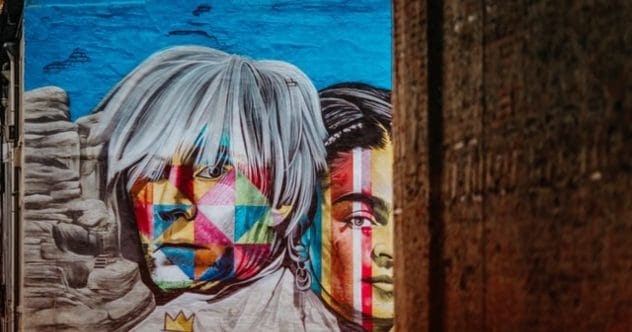Andy Warhol. The name itself conjures images of Campbell’s Soup cans, vibrant celebrity portraits, and a persona as enigmatic as his art. But beyond the mainstream fame lies a world of eccentricity that would make even the most avant-garde artist raise an eyebrow. Warhol didn’t just create art; he lived it, turning his entire existence into a performance. Prepare to delve into some of the most astonishing and peculiar aspects of the man who famously predicted everyone’s 15 minutes of fame. Here are 10 bizarre facts about Andy Warhol that will change how you see this pop art pioneer.
10. Meet Drella: The Dual Persona
Andy Warhol was a man of many moods, often described as frustratingly unpredictable. His personality could shift dramatically, leaving friends and colleagues bewildered. This led his inner circle, including Lou Reed and John Cale of The Velvet Underground, to coin a unique nickname for him: “Drella.” This portmanteau perfectly captured his complex nature by combining the dark, mysterious allure of Dracula with the gentle, almost fairytale-like quality of Cinderella.
Warhol wasn’t particularly fond of the nickname, but he acknowledged it, sometimes even adopting the persona of Drella when he dressed in drag. After his death, Reed and Cale paid tribute to their multifaceted friend with an album titled “Songs for Drella,” immortalizing this unique moniker.
9. His Ever-Present “Wife”
While Andy Warhol never officially married a person, he often referred to his tape recorder as his “wife.” This wasn’t just a casual nickname; it was a constant companion. For years, Warhol meticulously documented his life through audio recordings. He’d carry his Sony tape recorder everywhere, capturing conversations, private thoughts, and even ambient sounds from his surroundings.
This obsessive recording habit resulted in a vast archive of tapes, offering an unfiltered glimpse into his daily life, his thoughts, and the conversations that shaped his world. It was as if he wanted to ensure no moment, no matter how mundane, was lost to time. This practice also fed directly into some of his artistic projects.
8. The Secretly Devout Catholic
Given his openly gay lifestyle, his association with drag queens, and his often provocative art (including paintings made with urine), it’s quite surprising to learn that Andy Warhol was a devout Catholic throughout his life. Raised by traditional Eastern European immigrant parents in the Byzantine Catholic Church, Warhol maintained his faith privately, attending Mass regularly.
Biographer John Richardson revealed in his eulogy that Warhol was even responsible for at least one religious conversion, financially supported his nephew’s studies for the priesthood, and volunteered at homeless shelters. It was a side of him he largely kept hidden from the public glare, adding another layer to his complex personality.
7. The Hoarder of “Andy’s Stuff”
Warhol’s penchant for collecting and documenting extended far beyond audiotapes. He was a prolific hoarder, accumulating what he called “Time Capsules.” This started somewhat normally, with Warhol keeping boxes of receipts, letters, and other personal papers – a new box for each month. However, this habit quickly spiraled into something much grander and more peculiar.
By the time of his death, he had amassed 641 meticulously sealed and labeled boxes filled with an eclectic array of items, collectively known as “Andy’s Stuff.” These containers held everything from cookie jars and pornographic novels to crucifixes, Navajo blankets, and airplane menus. It was as if he couldn’t bear to part with any piece of his life’s ephemera.
6. His Iconic Hair Was a Wig Collection
Andy Warhol’s signature look – the short, choppy, silver hair paired with horn-rimmed glasses – is instantly recognizable. However, that distinctive hairstyle wasn’t entirely his own. Warhol began experiencing hair loss in his early twenties and, true to his artistic and image-conscious nature, decided to embrace wigs.
But he didn’t just wear one wig. He amassed a collection of over 40 high-quality, hand-sewn hairpieces made from imported Italian hair. He even had hairdressers style and trim these wigs to create the illusion of natural hair growth, alternating between shorter and longer styles. This carefully constructed image became an integral part of the Warhol brand.
5. A Man of Many (Other) Talents
While globally renowned as a groundbreaking painter, Andy Warhol’s creative ambitions knew no bounds. He was a true polymath, dabbling in an astonishing array of artistic and commercial ventures. He wasn’t just a painter; he co-authored a whimsical cookbook titled “Wild Raspberries” and was instrumental in managing and producing the iconic rock band, The Velvet Underground.
Furthermore, Warhol produced three television shows, directed numerous short and feature-length films, explored sculpture and photography, staged performance art pieces, and even wrote a play called Pork, which was based on his extensive audio recordings. One of his more unusual, though unrealized, ambitions was to open a chain of vending machine restaurants called “Andy-Mat.”
4. The Curious Case of His MTV Talk Show
One of Andy Warhol’s most intriguing forays into mainstream media was his talk show, Andy Warhol’s Fifteen Minutes, which aired on MTV from 1985 to 1987. True to Warhol’s style, it was unlike anything else on television. The show was a bizarre, captivating mix of celebrity interviews, experimental art pieces, and non-sequitur segments.
What made it particularly confusing, yet fascinating, was its ability to intersperse deeply insightful interviews amidst the avant-garde chaos. Warhol often had his guests participate in unconventional ways, like dressing up or acting out scenarios, which paradoxically seemed to elicit more genuine responses than standard talk show formats. It was a perfectly Warholian slice of television history.
3. Art Made with… Pee?
Yes, you read that right. Andy Warhol, never one to shy away from unconventional materials or methods, famously used urine in his art. In the late 1970s, during a period where he was exploring abstraction, Warhol created his “Oxidations” series, also known colloquially as his “piss paintings.”
For these works, canvases were prepared with iridescent copper paint. Warhol would then invite friends, assistants, and visitors to The Factory to urinate on them. The chemical reaction between the uric acid and the copper paint created unique patterns, textures, and a surprising range of colors – from reds and browns to blacks, blues, and greens. The variations were apparently influenced by the individuals’ diets and fluid intake, making each piece uniquely collaborative.
2. The Assassination Attempt He Survived
On June 3, 1968, Andy Warhol’s life was irrevocably changed when Valerie Solanas, a radical feminist writer and acquaintance, shot him at The Factory. Solanas, who had written the “SCUM Manifesto” (Society for Cutting Up Men), fired three shots, one of which critically wounded Warhol, piercing both lungs, his esophagus, spleen, stomach, and liver.
His survival was nothing short of miraculous. He spent two months in the hospital undergoing extensive surgeries, and at one point, his heart stopped, requiring doctors to open his chest and manually massage it back to life. Solanas was later diagnosed with paranoid schizophrenia. The attack left Warhol with lifelong physical and psychological scars.
1. Did the Assassination Attempt Ultimately Lead to His Death?
Andy Warhol passed away on February 22, 1987, at the age of 58, following what was considered a routine gallbladder surgery. His death came as a shock, as doctors had initially reported he was recovering well. However, he died in his sleep from a sudden post-operative cardiac arrhythmia.
Later scrutiny revealed that the surgery was riskier than initially perceived due to several factors. These included a family history of gallbladder problems and Warhol’s own reluctance to seek timely medical treatment for his condition. Crucially, the extensive injuries and trauma from the 1968 assassination attempt had left him physically vulnerable. While the gunshot wound alone wasn’t the direct cause of death nearly two decades later, physicians agreed that the lingering complications significantly increased the risks associated with any major surgery, tragically connecting his untimely demise back to that violent day.
Andy Warhol was a master of image, art, and intrigue. These bizarre facts offer just a glimpse into the extraordinarily unconventional life of a man who constantly challenged norms and courted curiosity. He was more than an artist; he was a phenomenon, and his eccentricities were as much a part of his legacy as his iconic artworks.
What’s the most surprising Andy Warhol fact you learned today? Share your thoughts in the comments below!










